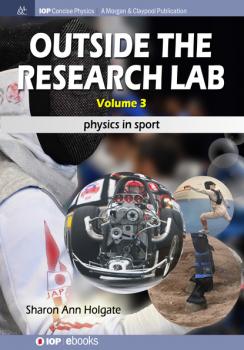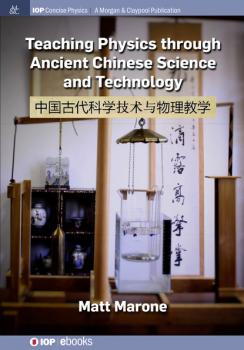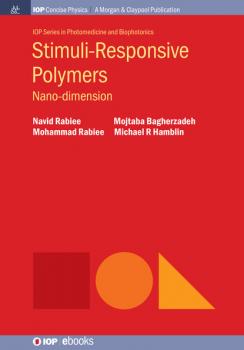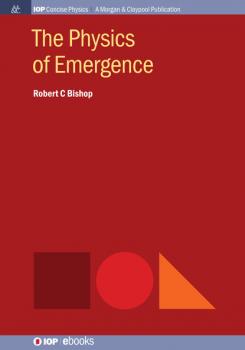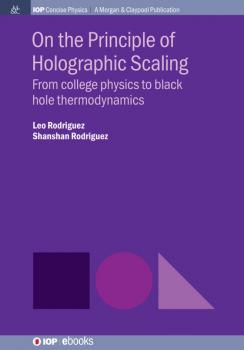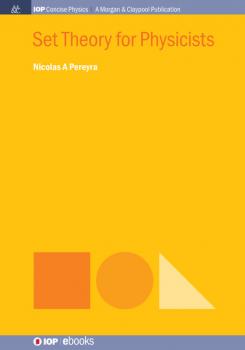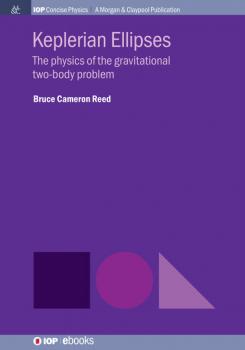ТОП просматриваемых книг сайта:
ЛИТМИР - LITMIR.BIZ - Электронная библиотека
Скачивание или чтение онлайн электронных книг.Аннотация
The Outside the Research Lab series is a testament to the fact that the physics taught to high school and university students IS used in the real world. This book explores the physics and technology inherent to a selection of sports which have caught the author's attention and fascination over the years. Outside the Research Lab, Volume 3 is a path to discovering how less commonly watched sports use physics to optimize performance, diagnose injuries, and increase access to more competitors. It covers Olympic and Paralympic fencing, show jumping horses, and arguably the most brutal of motorsports – drag racing. Stunning images throughout the book and clear, understandable writing are supplemented by offset detail boxes which take the physics concepts to higher levels. Outside the Research Lab, Volume 3 is both for the general interest reader and students in STEM. Lecturers in university physics, materials science, engineering and other sciences will find this an excellent basis for teaching undergraduate students the range of applications for the physics they are learning. There is a vast range of different areas that require expertise in physics…this third volume of Outside the Research Lab shows a few with great detail provided by professionals doing the work.
Аннотация
Asian studies and Physics is a unique blend rarely found in a Western scientific classroom. The field of Asian studies is rapidly growing and the traditional study of Asian philosophy, art, language and literature is branching out into scientific realms. At the same time, there is a growing need to educate our young people in science technology and mathematics (STEM). Reaching non-science majors with the basic principles of physics presents a particularly unique challenge. The topics presented in this work are designed to appeal to a wide range of students and present scientific principles through the technology and inventions of ancient China. We explore these ideas in their historical Chinese context and through the lens of our current scientific understanding. Our exploration of ancient Chinese science is not limited to just a theoretical understanding of physical principles. One distinction of this book is the strong «hands on» component. Detailed laboratory experiments are included which enable students to analyze ancient technology using modern laboratory techniques. Each experiment introduces the historical context and provides associated Chinese vocabulary. On the surface, these experiments involve recreating a Chinese technology. On a deeper level, we find connections to the scientific method and techniques of experimental analysis. Thus, an activity such as making paper, turns into a lesson on statistics and graphical analysis. Topics included in this volume cover one dimensional motion, energy conservation, rotational equilibrium and elasticity. We also explore the nature of science and include an introduction to the Chinese language. Laboratory experiments cover papermaking, constructing a weighing balance and stress-strain analysis of silk.
Аннотация
The Treaty on the Nonproliferation of Nuclear Weapons (NPT), is the cornerstone of non-proliferation and disarmament efforts. Yet its negotiation and success were not inevitable. This book aims to address the developments that led to the negotiation of the treaty, examine its implementation, and address challenges that the NPT faces going forward.
Аннотация
Leonhard Euler's Letters to a German Princess: A Milestone in the History of Physics Textbooks and More is a milestone in the history of physics textbooks and the instruction of women in the sciences. It also covers views of its author on epistemology, religion, and innovations in scientific equipment, including telescopes and microscopes. Today, 250 years later, we study this work of Euler's as a foundation for the history of physics teaching and analyze the letters from an historical and pedagogical point of view.
Аннотация
This book provides a general introduction to nanogels, and designs of various stimuli-sensitive nanogels that are able to control drug release in response to specific stimuli. Nanogels are three-dimensional nanosized networks that formed by physically or chemically crosslinking polymers. They have highly interesting properties such as biocompatibility, high stability, particle size adjustment, drug loading capability and modification of the surface for active targeting. They can respond to stimuli which results in the controlled release of drug and targeting of the site.
Аннотация
A standard view of elementary particles and forces is that they determine everything else in the rest of physics, the whole of chemistry, biology, geology, physiology and perhaps even human behavior. This reductive view of physics is popular among some physicists. Yet, there are other physicists who argue this is an oversimplified and that the relationship of elementary particle physics to these other domains is one of emergence. Several objections have been raised from physics against proposals for emergence (e.g., that genuinely emergent phenomena would violate the standard model of elementary particle physics, or that genuine emergence would disrupt the lawlike order physics has revealed). Many of these objections rightly call into question typical conceptions of emergence found in the philosophy literature. This book explores whether physics points to a reductive or an emergent structure of the world and proposes a physics-motivated conception of emergence that leaves behind many of the problematic intuitions shaping the philosophical conceptions. Examining several detailed case studies reveal that the structure of physics and the practice of physics research are both more interesting than is captured in this reduction/emergence debate. The results point to stability conditions playing a crucial though underappreciated role in the physics of emergence. This contextual emergence has thought-provoking consequences for physics and beyond, and will be of interest to physics students, researchers, as well as those interested in physics.
Аннотация
Holographic dualities are at the forefront of contemporary physics research, peering into the fundamental nature of our universe and providing best attempt answers to humankind's bold questions about basic physical phenomena. Yet, the concepts, ideas and mathematical rigors associated with these dualities have long been reserved for the specific field researchers and experts. This book shatters this long held paradigm by bringing several aspects of holography research into the class room, starting at the college physics level and moving up from there.
Аннотация
This book gives a rigorous, physics focused, introduction to set theory that is geared towards natural science majors. We present the science major with a robust introduction to set theory, focusing on the specific knowledge and skills that will unavoidably be needed in calculus topics and natural science topics in general, rather than taking a philosophical-math-fundamental oriented approach that is commonly found in set theory textbooks.
Аннотация
The development of man's understanding of planetary motions is the crown jewel of Newtonian mechanics. This book offers a concise but self-contained handbook-length treatment of this historically important topic for students at about the third-year-level of an undergraduate physics curriculum. After opening with a review of Kepler's three laws of planetary motion, it proceeds to analyze the general dynamics of 'central force' orbits in spherical coordinates, how elliptical orbits satisfy Newton's gravitational law, and how the geometry of ellipses relates to physical quantities, such as energy and momentum. Exercises are provided, and derivations are set up in such a way that readers can gain analytic practice by filling in the missing steps. A brief bibliography lists sources for readers who wish to pursue further study on their own.
Аннотация
Albert Einstein's General Theory of Relativity, published in 1915, made a remarkable prediction: gravitational radiation. Just like light (electromagnetic radiation), gravity could travel through space as a wave and affect any objects it encounters by alternately compressing and expanding them. However, there was a problem. The force of gravity is around a trillion, trillion, trillion times weaker than electromagnetism so the calculated compressions and expansions were incredibly small, even for gravity waves resulting from a catastrophic astrophysical event such as a supernova explosion in our own galaxy. Discouraged by this result, physicists and astronomers didn't even try to detect these tiny, tiny effects for over 50 years. Then, in the late 1960s and early 1970s, two events occurred which started the hunt for gravity waves in earnest. The first was a report of direct detection of gravity waves thousands of times stronger than even the most optimistic calculation. Though ultimately proved wrong, this result started scientists thinking about what instrumentation might be necessary to detect these waves. The second was an actual, though indirect, detection of gravitational radiation due to the effects it had on the period of rotation of two 'neutron stars' orbiting each other. In this case, the observations were in exact accord with predictions from Einstein's theory, which confirmed that a direct search might ultimately be successful. Nevertheless, it took another 40 years of development of successively more sensitive detectors before the first real direct effects were observed in 2015, 100 years after gravitational waves were first predicted. This is the story of that hunt, and the insight it is producing into an array of topics in modern science, from the creation of the chemical elements to insights into the properties of gravity itself.

